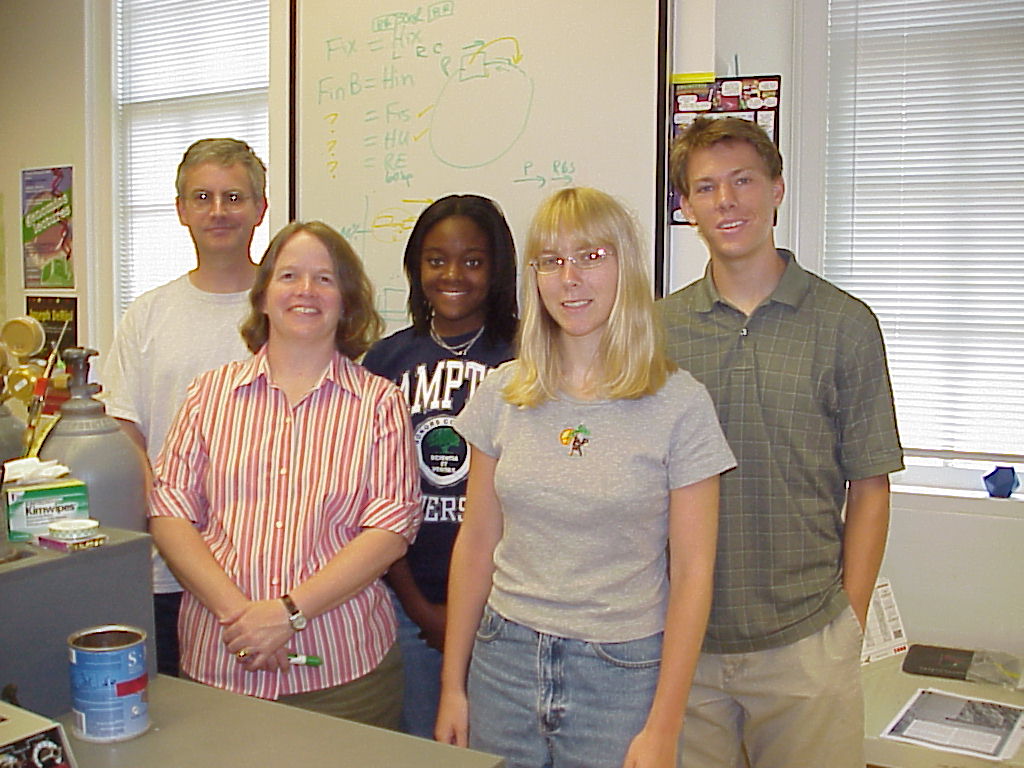Davidson 2006
From 2006.igem.org
| Line 20: | Line 20: | ||
<big>'''Approach'''</big><br> | <big>'''Approach'''</big><br> | ||
'''Math''': Signed permutations can be used to represent pancake stacks. "1, 2, 3" is a stack of three pancakes all in the proper order and orientation. "2, 3, -1" is the same stack, but here, pancake 1 is out of order and in the wrong orientation (burnt side up). | '''Math''': Signed permutations can be used to represent pancake stacks. "1, 2, 3" is a stack of three pancakes all in the proper order and orientation. "2, 3, -1" is the same stack, but here, pancake 1 is out of order and in the wrong orientation (burnt side up). | ||
| - | |||
| - | |||
| - | + | [[Image:Ehop.jpg|300px|Logo|left]]'''Biology''': Trying to invert antibiotic resistance genes using the Hin/Hix inversion method found in ''Salmonella typhimurium''. If we grow 10<sup>15</sup> cells, and each cell was attempting to solve the problem, then even rare events might be solvable by ''E. coli'' computers. We decided to tackle the burnt pancake problem since DNA, like burnt pancakes, has a directionality. We needed a way to flip the DNA and chose the Hin/Hix system. We had to isolate RE, HixC from ''S. typhimurium'' strain <font color='red'>XX (need to insert name)</font color>, and Hin from ''S. typhimurium'', strain TA100 . We aim to address these specific issues: | |
| - | + | 1. What impact does size of the invertable DNA fragment have on rate of flipping? | |
| - | + | Testing We decided to test the size constraints first, so we are building stacks of pancakes only one high at first. We will try to flip the promoter (smaller) in one case, and the coding region (bigger) in another case. The coding region is Tet<sup>R</sup> resistance gene isolated from a plasmid in the Registry. For higher stacks of pancakes, we will also use chloramphenicol<sup>R</sup> and cycloheximide<sup>R</sup>. | |
| - | + | ||
| - | + | ||
| - | + | ||
| - | + | ||
---- | ---- | ||
Revision as of 04:11, 18 October 2006
 Project Overview Davidson Parts Team Members Tools and Resources Check out our [http://www.bio.davidson.edu/courses/synthetic/photos/FlapJack_HotCakes.html Official Team Photo] |
Goal
Our goal is to mathematically model and genetically engineer a biological system that can compute the solution to a puzzle called the pancake problem. Our work was done in collaboration with the [http://2006.igem.org/wiki/index.php/Missouri_Western_State_University_2006 Missouri Western iGEM Team] and an undergraduate research fellow from [http://www.hamptonu.edu/ Hampton University].
The Pancake Problem: at the Interface of Math and Biology
Our project integrates math and biology using the pancake problem, a puzzle in which a disordered series of units (or stack of pancakes) must be shuffled into the correct order. Every unit, or pancake, must be placed in the proper order (largest on bottom, smallest on top) and in the proper orientation (burnt side down, golden side up). Try this puzzle out for yourself [http://www.cut-the-knot.org/SimpleGames/Flipper.shtml here]. Trial and error is one approach to solving the problem, but how could one compute the quickest solution? Our approach is to model the problem by representing a pancake stack mathematically and biologically.
A stack of pancakes can be represented by a series of integers in a certain order (ie. 1, 2, 3 vs. 3, 2, 1) where orientation is represented by a positive or negative value (1 vs. -1). Similarly, a series of DNA segments has a certain order (ie. promoter, coding region 1, coding region 2) and each unit has two possible orientations (plus strand vs. minus strand).
Approach
Math: Signed permutations can be used to represent pancake stacks. "1, 2, 3" is a stack of three pancakes all in the proper order and orientation. "2, 3, -1" is the same stack, but here, pancake 1 is out of order and in the wrong orientation (burnt side up).
1. What impact does size of the invertable DNA fragment have on rate of flipping? Testing We decided to test the size constraints first, so we are building stacks of pancakes only one high at first. We will try to flip the promoter (smaller) in one case, and the coding region (bigger) in another case. The coding region is TetR resistance gene isolated from a plasmid in the Registry. For higher stacks of pancakes, we will also use chloramphenicolR and cycloheximideR.
TEAM MEMBERS
Students
- Sabriya Rosemond is a rising junior biology major at Hampton University.
- Erin Zwack is a rising junior biology major at Davidson College.
- Lance Harden is a rising sophomore math major at Davidson College.
- Samantha Simpson is a rising sophomore at Davidson College who might design a major in genomics.
Faculty
- A. Malcolm Campbell [http://www.bio.davidson.edu/campbell Department of Biology]
- Laurie J. Heyer [http://www.davidson.edu/math/heyer/ Department of Mathematics]
- Karmella Haynes [http://www.bio.davidson.edu/ Department of Biology - teaching postdoc and visiting assistant professor]
TOOLS AND RESOURCES
iGEM 2006 Jamboree
White Board
Biology Tools (Wet Bench)
- Pancake Parts
- Davidson Protocols
- [http://gcat.davidson.edu/IGEM06/oligo.html Oligo Cuts Optimization]: by Lance Harden
- Papers of Interest
Math Tools
- Pancake Simulators, aka The Lancelator (MATLAB Code)
- Other Flipping Simulators
- [http://gcat.davidson.edu/IGEM06/randompancakeflipper.m User-Friendly Version]
- [http://gcat.davidson.edu/IGEM06/powerflipper.m Power-User Version]
- [http://gcat.davidson.edu/IGEM06/powerflipperplus.m Power-User Update]
- [http://gcat.davidson.edu/IGEM06/findmin.m Findmin]
- [http://gcat.davidson.edu/IGEM06/bigtrial.m Bigtrial]
- Graphing Tools
- [http://gcat.davidson.edu/IGEM06/pancakeplotter.m Pancakeplotter]
- [http://gcat.davidson.edu/IGEM06/permplotter.m Permplotter]
- [http://gcat.davidson.edu/IGEM06/adjmat.m Adjmat - creates adjacency matrices]
- [http://gcat.davidson.edu/IGEM06/bioadjmat.m Bioadjmat - Adjmat with biological equivalence]
- [http://gcat.davidson.edu/IGEM06/make_radial.m Make_radial - creates a radially-embedded graph]
- [http://gcat.davidson.edu/IGEM06/find_diam.m Find_diam - finds the diameter of a pancake graph]
Bio-Math Tools
- [http://gcat.davidson.edu/IGEM06/signedperms.m Signedperms - lists all signed permutations for a stack of k pancakes]
- [http://gcat.davidson.edu/IGEM06/bioperms.m Bioperms - Signedperms with biological equivalence]
Assembly Plans
Progress

